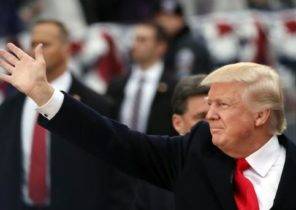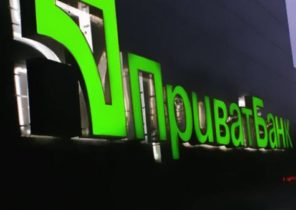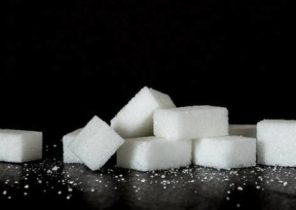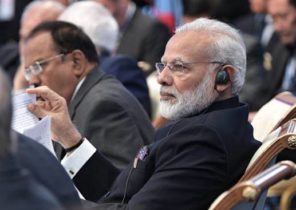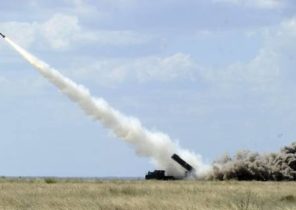Yesterday the mayor of London Sadiq Khan (Sadiq Khan) has promised to form a new Commission, it will examine the sights, streets and monuments of the capital on the subject of the racist past and the slave trade and decide whether it is necessary to rename them or to carry. This statement followed a fact, as this weekend the protesters Black Lives Matter (“black Lives are important too”) in Bristol was demolished the statue of the local patron and slave Colston Edward (Edward Coleston).
The new “Commission on diversity in the public sphere” will make the London monuments reflect the cultural diversity of its population. The mayor said that to honor the memory of some historical figures is unacceptable. My first trophy the Commission has already produced — and demolishing the statue of the slave-owner Robert Milligan (Robert Milligan, a Scottish merchant, boatbuilder and planter, approx. transl.) the Museum of London Docklands.
Mr Steerpike yesterday, Khan offered a minimum of one candidate for demolition — a statue of white feminists and suffragists Millicent Fawcett (Millicent Faucett), which he solemnly opened in Parliament square in 2018. But it goes beyond that, says Mr. Steerpike, because London is an endless fount of attractions that are worth checking out on morality.
Therefore, in order to assist the Commission, Mr Steerpike began to make a list of monuments, which are the first to be demolished. Readers your suggestions and wishes you can leave in the comments section.
London attractions
Downing street is named honor of the baronet George Downing (George Downing), a fervent supporter of West Indian slavery.
Buckingham Palace, built by John Sheffield, Duke of Buckingham and Normanby, and his third wife Catherine Darnley, illegitimate daughter of James II. This outstanding British was the founder and the largest shareholder of the Royal African company.
The fashionable London district Fitzrovia named after Henry Fitzroy, neobychnogo son of Charles II. This prominent Briton of the 17th century was a major investor in the Royal African company of his brothers, the Duke of York and future James II.
Westminstermay popular London attraction, but it was founded by William the Conqueror. Although the Normans, the scope of slavery in England was gradually reduced in the Book doomsday of 1086, States that even by the end of the reign of William the tenth of his subjects were slaves.
The London tower, the first stone castle in Britain, built all the same William. Although most of its history, it served exclusively peaceful purposes — the imprisonment and execution of free citizens, its history is inextricably linked with the name of the despot and oppressor of slaves.
Statue of Oliver Cromwell emblazoned on Parliament square, although the foothold of Irish peasants and strengthened the slave trade.
The basis of the British Museum was the collection of Hans Sloan (Hans Sloane), who worked as a doctor on a Jamaican plantation, and then married a girl from a rich and noble family.
The Bank of England from time immemorial is associated with the slave trade — including through the London society of planters and merchants of Western India.
Trafalgar square is named after Cape Trafalgar in Spain, whose inhabitants saw the court going for slaves in nearby Cadiz, a major port of the transatlantic slave trade, but did nothing.
King’s place (the headquarters of the newspaper “the guardian”) and kings cross are both dedicated to king George IV, to the outstanding British, who imposed slavery on the plantations of the West Indies.
Victoria (the district of the city, railway station and metro line) is named in honor of Queen Victoria. She rules India, where slavery had only been abolished in 1843. Although she personally oversaw the abolition of slavery and its criminal inaction speaks volumes.
Football club “QPR” in fact recalls the same Queen Victoria.
The Victoria and albert Museum is named in honor of the great Queen and her husband albert.
In the name of the football club “crystal Palace” immortalized pompous exhibition of her husband (1851), clearly financed by the slave trade — at least indirectly.
Nelson’s column commemorates the Admiral who opposed the abolition of the slave trade.
Years of Prime Minister William Gladstone (Gladstone Willian), may, and condemned the slave trade, but his father was a large planter in Jamaica and even received compensation from the government after its abolition. So his statue in the strand will also have to carry.
Statue of Achilles in Hyde Park — this ancient Greek “hero” has exacerbated the bloodshed in the Trojan war, refusing to leave his concubine Briseida.
Although a giant Monument was erected in memory of the Great London fire, on its pedestal is engraved the names of some dubious characters. In particular, sir Richard Ford (Richard Ford) and sir Robert Viner (Viner Robert), both mayors of London and apologists of the slave trade. Even worse, in the Western part of the monument is the sculpture of Charles II and his scandalous brother.
Cleopatra’s needle — this obelisk casts a shadow on the promenade. Not only that, it was erected by the Egyptian Pharaoh Thutmose III, an inveterate slaveholder, so it also gave Britain the infamous ruler of Egypt and Sudan, Muhammad Ali Pasha, all of his Kingdom that brought the prisoners into slavery.
London, the capital of England, still bears the stamp of its problematic origin. It was founded by the Romans-the slave owners as a base for the invasion of the British island and called their new city, Londinium. He soon became a stronghold of the oppression of the indigenous British. The Queen of the Iceni and a fervent opponent of slavery who worked very hard, burning the city to the ground in 60 BC, but the arrogant Romans rebuilt it anew. Isn’t it time to rename the capital?
